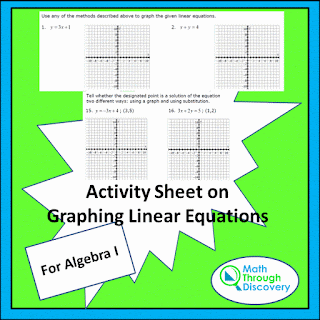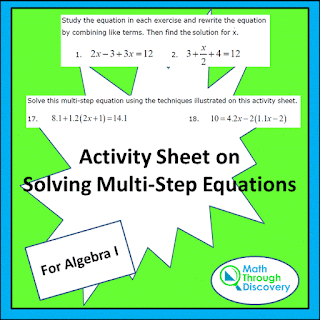The three forms for a linear equation are described: Standard form, Slope-Intercept form, and Point-Slope form. But all three approaches emphasize the same point: let's locate two points so we know where the line is.
- We can do it through replacing x with zero and y with zero and solving for two points
- We can do it through making an x-y table to find two points
- We can do it through the y-intercept and using slope to find a second point
All three forms are approached with the same strategy of locating two points on the line. Once two points are located, the position of the line is determined.
This activity sheet has three sets of questions:
· Given an equation, locate the graph of the line on a coordinate axis. Students are not instructed as to which method they should use. The general strategy is to use any method to find two points that are solutions to the equation.
· Given four equations and four graphs, students must match which graph corresponds with which graph.
· Given an equation and a point, students must describe if the point is a solution to the equation two different ways: by graphing and by substitution.
Solutions for all exercises are included.
Activity-Sheet-on-Graphing-Linear-Equations






